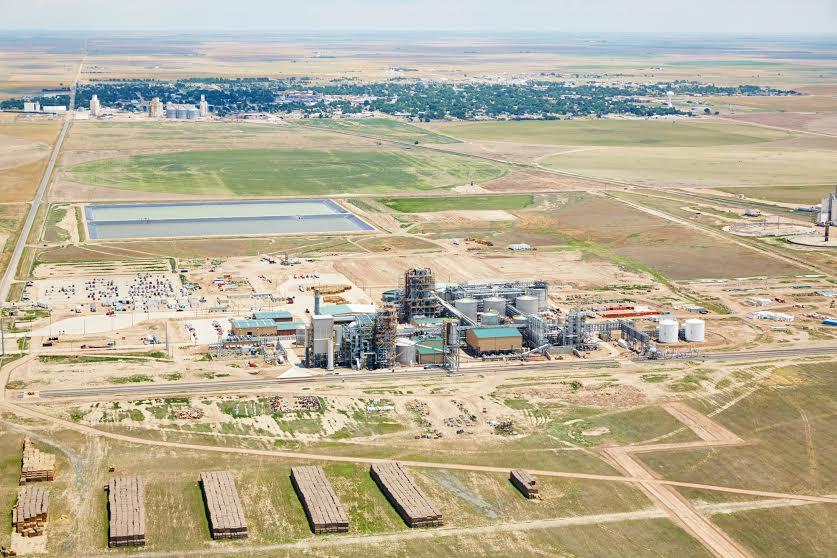SSE trailblazes with Fair Tax Mark accreditation


SSE plc, the UK's second largest energy supplier, has become the first FTSE 100 company to be awarded the Fair Tax Mark.
Launched in February 2014, the Fair Tax Mark is the world's first independent accreditation process for identifying companies making a genuine effort to be open and transparent about their tax affairs.
Richard Murphy, director of the Fair Tax Mark, commented: “Today is a major breakthrough for the campaign for responsible tax behaviour with the award of the Fair Tax Mark to SSE plc. As was the case with Fairtrade and other successful ethical standards, we anticipate that the accreditation of a major FTSE 100 company will prove to be a game-changer for the reporting of responsible tax planning in the UK.”
“Corporation tax avoidance costs the UK economy billions a year – money that is needed to support vital health, education and social security services in this country.”
Alistair Phillips-Davies, chief executive of SSE, said: “As a provider of an essential service SSE firmly believes it has a responsibility to contribute to the societies in which it operates. Paying the appropriate amount of tax is core to this; and we are determined to abide by both the spirit and letter of the UK’s tax regulations.
“Almost nine million SSE customers now have an independent guarantee that their energy comes from a company that seeks to pay the right amount of corporation tax, at the right time, in the right place and explains how it does that."
3p Weekend: 5 Things Employers Need to Know About Millennials


Want to learn more? Join TriplePundit, SAP and our special guests at #SAPsocent on October 23 at 9 a.m. PST / Noon EST for a special Twitter Chat about millennials and social entrepreneurship. Click here for more info.
With a busy week behind you and the weekend within reach, there’s no shame in taking things a bit easy on Friday afternoon. With this in mind, every Friday TriplePundit will give you a fun, easy read on a topic you care about. So, take a break from those endless email threads, and spend five minutes catching up on the latest trends in sustainability and business.
According to a study conducted in 2012 by leadership strategist Erica Dhawan, 75 percent of the global workforce will be made up of millennials by 2025. We all know millennials love their smartphones and are more likely to shun car-centric suburban life in favor of big cities -- but those aren't the only things that make this generation tick.
If employers are looking to attract and retain top talent, they'd be wise to learn these five things about millennials.
1. They're looking for purpose, not just a paycheck ...
A recent PwC study found that more than half of recent college graduates are seeking a company that has corporate social responsibility (CSR) values that align with their own, and 56 percent would consider leaving a company that didn’t have the values they expected. As Andy Savitz, author of “Talent, Transformation and the Triple Bottom Line,” put it in a panel discussion at the 2014 Sustainable Brands conference: “They’re looking for purpose, not just a paycheck.”2. ... And they're willing to take a pay cut for a company they believe in
According to a survey conducted by Net Impact, the majority of millennial respondents (including students and young professionals) said they would take a pay cut to work for a company they believe in. Thirty-five percent of respondents said they would take a 15 percent pay cut to work for a company committed to CSR; 45 percent would take the same pay cut for a job that makes social or environmental impact, and a whopping 58 percent were willing to earn less for an organization with values like their own.
3. They have their eye on your sustainability performance ...
Cloud-based engagement platform WeSpire (formerly known as Practically Green) recently released the results of a five-year research study that shows the influence millennials have in organizations stepping up their employee engagement action. According to the study, more than 50 percent of employees would like to see their employer’s stance change on employee sustainability efforts, with millennials leading all age groups.
As Susan Hunt Stevens, founder and CEO of WeSpire, told TriplePundit in a recent interview: “People are realizing that these are not ‘nice-to-have’ programs. They drive the bottom line and the top line of business.”
4. ... And that of their coworkers
Another intriguing findings from WeSpire’s “State of Employee Engagement” study is how interested millennials are in the sustainability activities of not just their company, but also their colleagues.
“Employees see sustainability as social,” the report’s authors write. In fact, 65 percent of respondents said they want to learn more about what their co-workers are doing. This finding persists throughout nearly all age groups — from millennials to Baby Boomers — but is much stronger in the millennial generation, as high as 75 percent.
5. They're kind of a tough sell, so be ready
As Nicolette Van Exel, who heads up SAP's Emerging Entrepreneur Initiative, put it in a recent interview with 3p: "You really have to have a very, very compelling proposition for people coming into the workforce and especially in the technology sectors.”
Adam “Smiley” Poswolsky, author of "The Quarter-Life Breakthrough," agreed. “This is a generation that wants to align interest with purpose,” said Poswolsky, who noted that it’s also “a generation that thinks deeply” about what they want out of life.
So, if you're trying to land top talent, you better be ready with a pitch about how your company benefits not only employees -- but also your community and the planet. As Poswolsky put it, “they are going to work harder for you,” if they are happy.
Image credit: Flickr/thetaxhaven
Based in Philadelphia, Mary Mazzoni is a senior editor at TriplePundit. She is also a freelance journalist who frequently writes about sustainability, corporate social responsibility and clean tech. Her work has appeared in the Philadelphia Daily News, the Huffington Post, Sustainable Brands, Earth911 and the Daily Meal. You can follow her on Twitter @mary_mazzoni.
Can Geoengineering Really Fix Climate Change?


Everyone seems to be wracking their brains about how to combat climate change these days. From the conservatively pragmatic to the impressively ambitious, there seem to be no end of theories on what will ultimately slow the heating of the atmosphere. While most of us have already heard of, and probably implemented, solutions like less driving and paring down on landfill refuse, there’s a whole lot of other ideas on the table these days that take a more imaginative tact.
One concept that the Intergovernmental Panel on Climate Change has proposed is called geoengineering: a fascinating collection of brainstorms that would mostly be relegated to the extreme of impressively ambitious goals. One approach that you probably heard about a few years ago involved wrapping Greenland in a huge blanket to reduce glacier melt.
While the success of this idea is still being measured, there have been lots of other ideas proposed as well. They include:
- Creating giant solar buffers, or shields
- Pumping spurts of aerosols into the atmosphere to cool the temp.
- Erecting giant stand-alone cloud seeders on the surface of the ocean
- Mining the earth’s vast storage of silicate rocks
The interesting thing is that the IPCC has actually thrown its weight behind some of the ideas. One proposal the IPCC has entertained involves carbon capture methods that essentially block the carbon from being re-emitted to the atmosphere. The captured carbon could then be stored in capsules underground.
It’s no surprise that this type of geoeneneering has received a fair amount of push back in recent years, as well. Critics argue that using unproven science to engineer the atmosphere comes with its own unknown risks – risks that could make the problem worse, rather than better.
Aerosols, Scientific American pointed out way back in 2008, could actually worsen droughts, not improve them. And remember that phenomena that Canadian environmentalists discovered years ago called acid rain? Tampering with the content of our atmosphere could change what falls to the earth.
But what’s really interesting is that both sides of this argument are pretty much airing the same criticisms of the other: Neither side feels putting all the eggs in the other one’s basket is a good idea. Both are afraid that human inertia will win out over the other side’s ability to reverse climate change. Those who feel that renewable energy sources, reducing carbon emissions and other human-directed methods is the answer aren’t sure they want to put the fate of the planet in the hands of industries driven by novel design. Those who support geoengineering aren’t sure humans have the motivation or the organization to drastically change the way we live. And both sides predict disaster if something isn’t done quickly.
And unfortunately, both may right.
There’s tremendous risk in innovation. As University of Washington Professor Stephen Gardiner points out, ethics have to be at the forefront of geoengineering concepts. Political inertia has affected our ability to implement global policies, but using geoengineering as an “intervention” could still herald the same effect.
“We might try and adopt a quick technological fix but one that holds the worst impacts for a few decades without much attention to what happens after that,” said Gardiner in an interview with the Guardian.
Ethics is also at the core of what controls our ability to reshape the way we live. It’s far harder to implement global policies that cut profits from carbon sources than it is to try to come up with a quick fix that someone else designs.
But as scientists have pointed out, we’re fast reaching the age of consequences when revamping human nature may not have the impact we would hope. It has taken generations to put better cars on the road, despite the fact that we have had the technology for decades.
And sitting in an apartment in Vancouver, one of the greenest cities in the world, with green bylaws and landfill reduction policies in force and a mountain of challenges clearly still being met, it seems abundantly clear that human nature, like technology works or fails based on the ethical policies that drive the innovation.
Geoengineering can work if those innovations are driven by the same policy that drives success in how we handle carbon emissions and our garbage: ethical, sustainable management, not profit margins and Nobel Prize-sized notoriety.
And that’s the catch. Irrespective of the answer applied, it all comes back to how we look at our relationship to the future. If Mother Nature has taught us anything, it’s the fact that there are no quick fixes. Stopping climate change requires making sure that the technology we investigate and policies we choose will be sustainable not only for us, but for future generations.
Image credit: NASA Goddard Flight Photostream
DOE and Abengoa Launch Biorefinery in Kansas


Kansas is a political mess right now, and its leaders have hardly been hospitable to sustainable development, but a new biofuels project underway, close to the border with the Oklahoma panhandle, shows that new clean energy technologies do have a future. This morning the Department of Energy and the Spanish multinational Abengoa are officially kicking off the company’s first commercial-scale biorefinery in Hugoton. Once known as Kansas’s natural gas capital, this town of 4,000 may very well become known as the catalyst for next-gen biofuels, such as cellulosic ethanol, finally scaling and becoming cost-competitive with other fuels.
So why would a €7.8 billion (US$10 billion) company be bothered with this corner of the prairies? A conversation I had with Chris Standlee, Abengoa’s executive vice president of global affairs, shed some light on the future of cellulosic alcohol—which could finally play a role in diversifying our country’s energy portfolio, reduce carbon emissions and generate revenue for farmers. According to Standlee, Albengoa’s investment in the Hugoton plant reflects the company’s confidence that cellulosic alcohol is finally becoming a more cost effective option.
The new biorefinery was completed in August and started production late last month, and according the company, will be able to produce as much as 25 million gallons (95 million liters) of fuel annually. The plant collects agricultural waste, mostly the stalks and leaves that comprise corn stover and other residues, from farmers within 50 miles of the plant—paying local farmers as much as $17 million annually for that feedstock. The company expects to process 1,000 tons of biomass daily. One challenge with biofuels, of course, is the question whether a company would be able to source enough feedstock for the long run. Standlee assured me that the amount of waste Abengoa is collecting only scratches the surface: about 300,000 tons out of the 15.3 million tons of agricultural residues generated within 50 miles of Hugoton annually.
Waste from corn, wheat and sorghum production, as well as switchgrass, is rich in sugars, but (in layman’s terms) they are trapped in cellulose, and breaking through those stubborn cell walls has long been the bugaboo of ethanol production—which is why for decades the U.S. has favored corn ethanol while Brazil has had a 40-year history of advanced sugarcane ethanol production. But as Standlee explained to me, advancements in enzymes are proving to be the big difference. Four years ago, enzymes accounted for about $1.85 of the cost per gallon of cellulosic ethanol, which is why costs hovered between $6 and $8 per gallon. Albengoa manufactures their own enzymes, hence one reason why those costs have gone done as much as 30 percent since 2010. And Standlee claims the cost of enzymes per gallon of production could hit as low as 50 cents in a few years. The result: a gallon of cellulosic alcohol costing $2.30 a gallon in 2016 is not unrealistic—and could be very attractive considering fossil fuel’s price volatility.
The results are higher yields: in 2010 a ton of agricultural waste yielded about 55 gallons of fuel. Now that amount is up to 75 gallons, and Standlee sees that figure increasing to 85 gallons within two years. The company has invested at least $100 million over 10 years in its research and development of cellulosic alcohol. Full disclosure: the DOE did provide Abengoa a $132 million loan guarantee and $97 million in grants. But to keep this in context, annual federal government subsidies for fossil fuel production in the U.S. range from $10 to $52 billion; this year that figure could reach $21 billion.
This Kansas plant is only one cog in Abengoa’s biofuels portfolio. The company is also testing generating ethanol from municipal trash, and is also investing in biofuels for airplanes as well as bioplastics. The ability to create fuels out of what would otherwise be waste could make a huge difference by the end of this decade—and also help make a dent in the food-vs-fuel debate that have spooked many investors, and governments, away from biofuels.
Image credit: Abengoa
After a year in the Middle East and Latin America, Leon Kaye is based in California again. Follow him on Instagram and Twitter. Other thoughts of his are on his site, greengopost.com.
The Mustang Gets an EcoBoost for Its 50th Birthday


I've always wanted a Ford Mustang. As a youngster, I often daydreamed about cruising down the highway with the top down and the wind in my hair. Many a homeroom game of MASH ended in disappointment -- not because I got stuck living in a shack or married to a boy who pushed me down at recess, but because the luck of the draw left me with something other than a Mustang.
I never would have guessed that the first time I'd sit behind the wheel of my dream car would be as an environmental journalist -- about to punch the pedal of the most fuel efficient Mustang ever made.
For the model's 50th birthday, the folks at Ford Motor Co. decided to do things a bit differently by launching the first Mustang with EcoBoost. Available with both manual and automatic transmissions, the EcoBoost model promises 32 miles per gallon on the highway. Now, before you get too excited, I'm not talking about the V8 version -- or even the V6. The 2015 Mustang EcoBoost comes equipped with a 4-cylinder engine. But at 2.3 liters and 310 horsepower, it still has a good deal of pep. The 320 pound-feet of torque doesn't hurt performance either. In fact, the EcoBoost produces more horsepower and torque than the Mustang GT engines did just 10 years ago.
Unlike many 'eco' vehicles, there's no lag when I put my foot on the gas, and the car pushed me back in my seat as I took off from a red light. The Mustang EcoBoost may not have as much rumble as the GT, but its smooth steering and curve-hugging agility make for a good time behind the wheel. It definitely lived up to my childhood fantasies, and its fuel economy raises the bar for Mustang.
Under the hood, the 2.3-liter EcoBoost is the first Ford engine to use a low-inertia, twin-scroll turbocharger. For those who aren't up on the technical terms, this feature provides quicker boost response while enabling lower emissions and improved efficiency. The cylinder head features an integrated exhaust manifold that separates the inner and outer pairs of cylinders into each of the two inlet passages to the turbo. The result is similar performance to a more complex twin-turbocharger configuration, meaning quicker torque delivery when the driver needs it for passing maneuvers. The separated exhaust ports also enables improved fuel consumption.
Active grille shutters help make the EcoBoost engine even more fuel efficient by further reducing drag at higher speeds when extra cooling capacity is not needed.
Mustang is known for its gorgeous interiors, and the 2015 EcoBoost model does not disappoint. The interior dash features a slick look that was modeled after the cockpit of an airplane. Although it's tough to knock the luxurious race car feel of all-leather seating, my vegetarian lifestyle (and fondness for all things sustainable) makes me partial to the Repreve fabric alternative -- which is actually made from recycled plastic bottles and post-industrial waste. Additional sustainable materials include soy-based foam in seat cushions and seat backs, as well as recycled denim insulation.
As Tom Barnes, Ford Mustang vehicle engineering manager, put it, the EcoBoost model "satisfies the Mustang enthusiast while introducing Mustang to a different group of people."
Speaking of bringing Mustang to the masses: Ford plans to roll the vehicle out in 140 countries this fall -- its largest market ever. The company is also going on a 10-city tour to show off the Mustang's new 'green' look. The 'Mustang Bucket List' tour heads to Orlando and Miami at the end of this month, then to Houston and Dallas in mid-November before wrapping up in Los Angeles Dec. 2-7. So, stop by to make your Mustang dreams come true -- just like I did.
Monday on Triple Pundit: Keep an eye out for an in-depth look at how Ford is revolutionizing sustainable materials in the auto industry.
Images by Mary Mazzoni
Editor's Note: Travel accommodations for the author and Triple Pundit were provided by Ford.
Based in Philadelphia, Mary Mazzoni is a senior editor at TriplePundit. She is also a freelance journalist who frequently writes about sustainability, corporate social responsibility and clean tech. Her work has appeared in the Philadelphia Daily News, the Huffington Post, Sustainable Brands, Earth911 and the Daily Meal. You can follow her on Twitter @mary_mazzoni.
Retailers Cite Low Wages as Major Threat to Business


Two-thirds of America's largest retailers, most of which pay minimum wage, are citing "flat or falling disposable incomes" as a serious risk factor to their business models. This according to a report by the Center for American Progress. The report isn't based on squishy personal corporate responses from public relations staff. No ... It's based on the actual Securities and Exchange Commission filings for these companies as they cite risk factors to their businesses. These 10-K filings show that major retailers are highly concerned about how low and stagnant wages among consumers are a threat to business.
Median household incomes are not doing well. In 2013 they were 8 percent lower than in pre-recession 2007 which, according to the report, "leaves the median married couple with two kids with $5,500 less to spend annually on food, clothes and other essentials that retailers sell."
Low estimates are that the middle class accounts for 30 percent of the 115 million American households. That's about 35 million households, times $5,500 less per year, for a total of about $193 billion less in available funds each year that could be going to Walmart, Burger King, Kohl's, Sears or whatever favorite retailer you might have. That's a huge hit to America's retailers, and it's got Wall Street worried. While our leaders in Washington, D.C. keep insisting on the merits of trickle-down economics, retailers, restaurants and Wall Street economists are starting to notice that not only is money not trickling down -- but it's also no longer trickling up.
This is no small thing. Consumer spending is the largest segment of the U.S. economy.
The horrible irony of course is that many of these retailers, acknowledging that stagnant incomes hurt their sales, are part of their own problem as they pay low wages while lobbying aggressively to keep the minimum wage low. Meanwhile, their 10-K corporate filings with the Securities and Exchange Commission tell a story at odds with their own pay scales, with 88 percent of these retailers citing "weak consumer spending" as a risk factor to the very stability of their own business model.
JCPenney's 10-K filing says, "The moderate income consumer, which is our core customer, has been under economic pressure for the past several years, and may have less disposable income for items such as apparel and home goods"
Burger King's 10-K filing says, "Increased unemployment and underemployent of our customer base, decreased salaries and wage rates ... adversely affect consumer behavior by weakening consumer confidence and consumer spending."
Goodness. If only some ... entity ... could increase the salaries and wage rates so people could afford a delicious flame-broiled burger, had Your Way. Don't look to the National Restaurant Association, however -- also known as the NRA. Restaurants send millions of dollars per year to D.C. to lobby to keep wages low -- one reason $7.25 has been the national minimum wage since 2007.
It's unclear whether or not retailers and restaurants are connecting the dots between their own low wages and their struggles to sell to the increasingly struggling middle class.
Wall Street and banks are also struggling with the same apparent cognitive dissonance.
Says Ellen Zentner, executive director and senior economist at Morgan Stanley, “Faster employment and wage growth for those at the bottom, were it to have staying power, would help lift consumer spending, the biggest part of the economy.”
And says Michelle Meyer, senior economist at Bank of America Merill Lynch, "Wage growth has been, as you know, extremely lackluster. So that’s one of the factors that’s weighing on primary home buying."
Is it possible this is one of those scenarios where everybody knows what it takes to solve the problem -- but nobody wants to make the first move? Retailers, restaurants, Wall Street, all know that consumer spending and low wages are dragging the U.S. economy down, and yet they continue to funnel millions into efforts to keep wages low. It's bizarre. If these dudes can't get their act together even to save their own skin, let alone the skin of those struggling, maybe the government should in the form of the minimum wage increase. It's clearly what everybody needs.
Image credit: Mike Mozart: Source
Method’s New Factory to Host World’s Largest Rooftop Farm


Back in March, eco-friendly cleaning supply company Method broke ground on its first U.S. manufacturing plant, set to be built on Chicago’s South Side. Now the San Francisco-based company has revealed more details about the green roof planned for the factory: Through a partnership with urban farming company Gotham Greens, the facility will boast the largest rooftop farm in the world, producing up to 1 million pounds of produce each year.
Gotham Greens will design, build and operate the 75,000-square-foot greenhouse, the Brooklyn-based company announced in a joint press release with Method in early October. The pesticide-free produce harvested from the urban rooftop farm will be distributed through local Chicago retailers, restaurants, farmer’s markets and community groups – bringing fresh, healthy fruits and vegetables to the food desert that is the Windy City’s South Side. The greenhouse can also provide full-time green collar jobs for residents in the community, Gotham Greens’ Marketing and Partnerships Manager Nicole Baum told Method in an interview on its blog.
Gotham Greens’ farming practices yield numerous environmental benefits: Its irrigation methods use 20 times less land and 10 times less water than traditional agriculture requires, the company said in a statement. And although its produce isn’t certified organic, Gotham Greens does not spray pesticides on its fruits and vegetables. Instead, the company utilizes beneficial insects to combat the pests that threaten its crops – releasing at least 10,000 beneficial bugs into each greenhouse every week – according to Baum.
The sterile environment of greenhouses also reduces the risk of foodborne pathogens like E. coli and salmonella, Gotham Greens said in a statement – a safety issue that the conventional food industry has continued to struggle with.
Growing produce on a Chicago rooftop and then distributing the harvest throughout the local community is also clearly environmentally preferable to shipping food across the country for consumption. But Chicago residents will not only reduce their “food miles” – the distance their fruits and veggies have traveled from farm to plate – but they will also take advantage of the better taste and higher nutritional value of ultra-fresh produce. In fact, the urban farming company predicts that on many shopping trips, Chicagoans will find Gotham Greens’ produce in their stores or farmer’s markets that has been harvested and packaged that same day – even in the middle of winter.
The rooftop farm on Method’s factory will be Gotham Greens first venture outside of New York, where the company operates several rooftop greenhouses, including a 20,000-square-foot facility on top of the Gowanus, Brooklyn Whole Foods. While Gotham Greens focuses on growing leafy greens like lettuces, chard and kale, it also cultivates tomatoes and herbs, such as arugula and basil.
In addition to hosting the world’s largest rooftop farm, Method’s “soap factory” will incorporate numerous other environmentally and socially responsible elements – so many, in fact, that the company hopes the facility will become the first manufacturing plant to attain LEED Platinum certification.
Designed by William McDonough + Partners, the facility is being constructed on a former lumberyard that is now a brownfield site in Chicago’s Pullman neighborhood. The building plans include a 230-foot wind turbine that will generate about half of the factory’s annual electricity, as well as solar panels that can turn themselves to track the movement of the sun. Also slated for the factory roof, in addition to the greenhouse: a 1,500-square-foot canopy of greenery to help the building reduce energy use, improve neighborhood air quality and curb stormwater runoff.
And Method estimates its factory, scheduled to open its door next spring, will create nearly 100 new manufacturing jobs for Chicago residents.
With so many benefits to both the local residents and the environment, Method is reinventing the factory: from a neighborhood eyesore spewing pollution to a valuable community resource. And if anyone can pull off such a grand vision, it’s the same company that taught us green doesn’t have to be drab (check out its sleek product design) and made product packaging out of plastic litter from the ocean.
Image credit: William McDonough + Partners, Architects
Passionate about both writing and sustainability, Alexis Petru is freelance journalist based in the San Francisco Bay Area whose work has appeared on Earth911, Huffington Post and Patch.com. Prior to working as a writer, she coordinated environmental programs for Bay Area cities and counties. Connect with Alexis on Twitter at @alexispetru
SXSW Eco Interview: Jeff Cheney, Earth911


This post is part of Triple Pundit’s ongoing coverage of the SXSW Eco conference. For the rest, please visit our SXSW Eco page here.
We've been fans of Earth911 since back in the day when they were merely a recycling services directory. Now the site has grown into a major player in eco-friendly news and information and has just launched their first ever eco-marketplace, YouChange.
By encouraging consumers to "vote with their dollars," the YouChange platform will offer thousands of vetted products that will not only make you feel better about where your money goes, but will also reward companies that are doing the right thing vis a vis the environment.
I had a chance to talk to the "president of earth" himself, Jeff Cheney, last week in Austin...
Green Building Questions: What Makes Fiberglass Windows Energy Efficient?


By Paul Kazlov
As more people, homeowners especially, push to go green at home, many are turning to eco-friendly products such as energy efficient windows. As a result, fiberglass windows are gaining popularity due to their energy efficient material.
Have you ever wondered what makes fiberglass windows, or fiberglass in general, so energy efficient? A variety of factors serve as the foundation for the material’s uncanny ability to save home and business owners thousands on heating and cooling bills. Some of the fundamental causes of fiberglass’ flawless energy conservation range from a long lifecycle performing at optimal functionality and a prolonged degradation process. In addition, the materials that comprise fiberglass windows are cheaper to produce and require less raw goods, as compared to vinyl and wood products.
In fact, fiberglass requires very little natural resources to be consumed, if any at all. Furthermore, fiberglass is certainly more eco-friendly when compared to wood which requires the utilization of trees. Here are some of the features of fiberglass windows that make them remarkably environmentally friendly and energy efficient.
Less degradation, prolonged lifecycle
Fiberglass cannot be compromised as easy as wood. This is fairly significant considering that wood framing can warp over time. This can lead to a multitude of problems, including structural integrity issues, which ultimately leads to more costs, not less.
Additionally, a more prevalent issue with wood products is a sudden increase in heating and cooling bills. This situation can develop from the natural deterioration that many wood products experience with time. Warped wood can place strain on windows and as a result, increase air infiltration. That pesky draft that abruptly manifested, will allow outside warm air or cold air to enter any room or area more than usual and thus require more energy to compensate for this influx. This of course raises utility costs. Fiberglass windows do not warp and thus can be exceptionally economical over the long term.
Vinyl windows can present problems of their own. Vinyl is more likely to age, weather and show blemishes, faster and easier than fiberglass. In addition, fiberglass is nine times as stronger than vinyl on average. These two precepts not only showcase fiberglass’ exceptional durability and longevity, but also exposes vinyl’s weaknesses which can lead to an increase in energy bills. When windows do not operate at optimal functionality, energy bills have a tendency to escalate and rise. When you consider the lifecycle of vinyl against fiberglass, it can be deduced that fiberglass will perform better and longer and as a result reduce overall energy costs.
Things are starting to take shape
Fiberglass has the tendency to hold its shape perfectly. This small difference can be a huge one, as a window that fails to hold its shape can also be the source of air infiltration and further drive energy bills higher. Fiberglass, on the contrary, can contour to virtually any fitting and firmly stay in place. Furthermore, these windows are very hard to compromise and as long as they are placed in any opening, they will almost always keep out all outside air.
Multiple layers of glazing = Multiple dollars in savings
Fiberglass Windows, a website focused on informing the public on the benefits of fiberglass windows, states, “When manufacturers add a second, third or even a fourth layer of glazing the insulation vastly improves.” The tendency of most fiberglass windows is that they, in fact, come prepared with multiple layers of glazing. As mentioned, this can provide a higher level of insulation which in turn allows for more warm air and cold air to be kept in when needed. As a result, energy bills are raised when environment improving-air escapes readily through thinner panes featured in more traditional or older forms of glass.
Tinted glass coatings
Tints are another feature commonly found in fiberglass windows. In some cases, tints are applied along with an acrylic film that repels various elements. Tints repel solar heat and once more reduce the need for an increase in air conditioning, during cooling days. In fact, on some of those “borderline” days where a fan or air cooling unit may be serviceable, a fiberglass window may serve as the deciding factor between activating these devices and leaving them off.
This can largely be chalked up to the instrumental influence that the slightest addition in solar reflection can provide. An appropriate analogy to demonstrate this would be the difference between wearing darker colors versus lighter colors on sunny days. Those who wear lighter colors are less likely to dehydrate or overheat, because their clothing repels sunlight which brings heat. This is a great way to illustrate how fiberglass windows with tints are less likely to allow warm air in to any space, greatly reducing air temperatures and subsequent use of cooling units.
Image credit: Sorokopud, DepositPhotos
Paul Kazlov is a “green” home remodeling enthusiast and an industry pioneer for innovation in home renovation. Paul writes for the Marvin Windows NJ blog and strives to educate people about “green” products such as fiberglass windows, metal roofing, and much more. Follow him on Twitter @PaulKazlov.
Low take-up of Ban the Box blamed on ‘exaggerated fear’


The charity Business in the Community (BITC) is calling on more UK employers to remove the criminal record disclosure tick box from application forms – as part of its Ban the Box campaign, launched a year ago in response to widespread discrimination against job-seeking ex-offenders.
Currently only 25 employers, with a combined workforce of over 200,000 have removed the criminal record tick box from their recruitment process.? ?
BITC says too few employers are taking action to make their workforces accessible to the 1 in 5 unemployed jobseekers with a criminal conviction due to exaggerated fear; misunderstanding of legal requirements surrounding conviction disclosure; and the belief that the tick box helps to prevent risk to the organisation and employees.
“Removing the tick box doesn’t remove disclosure,” points out Catherine Sermon, Employment Director, BITC. “It simply moves asking about convictions to later in the recruitment process – assessing candidates on their suitability, skills and ability first. If just 5% of UK private sector employers removed the tick box, over a million roles would be more accessible to ex-offenders. We are urging many more employers to join the 25 pioneering firms who have committed to Ban the Box this year.”
For more information about Ban the Box click here and follow the #BantheBoxUK on Twitter.
Picture credit:
© Pat138241 | Dreamstime.com - Pressing On Question Mark Photo